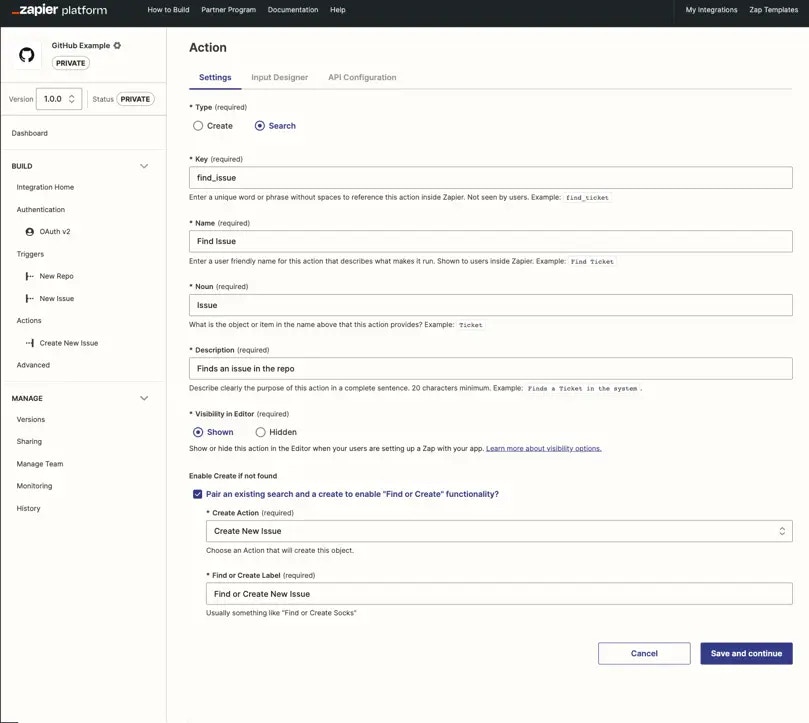1. Add the action settings
- Open the Actions tab in Zapier’s Platform UI from the sidebar on the left, and select Add Action, selecting your action type. New actions are create type by default, and add new data or update existing data to your app.

Note: You cannot change an action type once you click Save and Continue
on a new action. If you need to change the action type, delete the action and
recreate it.
- On the Settings page, specify the following:
- At the bottom of the settings page, you’ll see an option to pair your search with a create action. That lets your action also create an item if the search does not return any results.
- Click on the Save and Continue button.
2. Complete the Input Designer
On the Input Designer page, add user input fields for this action. All action steps must include an input form for Zapier to gather the data needed to create or find items in your app. Add at least one input field to your action. Before building your action’s input form, list each piece of data your app needs to find an item. Most search actions only include a single input field, sometimes along with a drop-down menu to select filter data.3. Set up the API Configuration
In the final API Configuration page, add the API endpoint where Zapier will send the search request to. AGET call is used for search actions by default, and sends the data from the input form to your API endpoint.
Zapier expects an array response with 0 or more items.
If multiple matches are found, return a reasonable number of items. Pagination is not supported, and returning too many results will produce errors. Although by default Zaps only use the first result, users can decide to group all results as line items. Other products like Agents will always use all results. Do not group multiple results as line items yourself, as this will conflict with allowing products and users to control this.
If no matches are found, an empty array must be returned - even if the API responds with a 404 status. A search that returns no results is still considered a successful action step and should not return an error.
If you need to parse the response from the endpoint into the expected response type, switch to Code Mode to write custom JavaScript code for your action.
4. Test your API request
Configure test data to test the search action. Testing a GET request would be expected to return the item from the endpoint.5. Define your output
Define sample data and output fields following the guide.Need help? Tell us about your problem and we’ll connect you with the right resource or contact support.